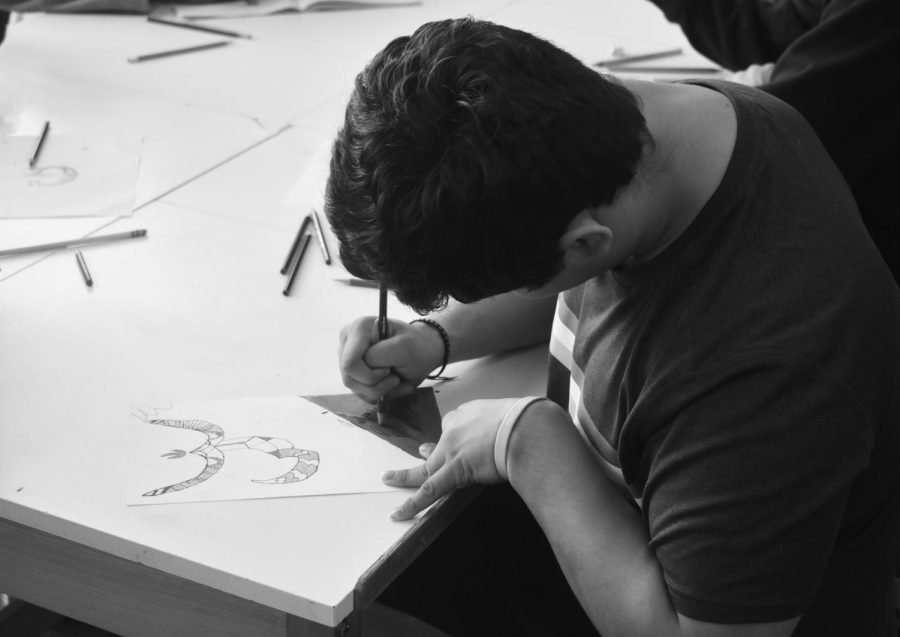Special Education Moves Towards Integration
How Garfield is taking steps towards inclusivity.
“Only in room 228.” This phrase — a nod to the unpredictable and unique things that happen every day in this special education classroom — perfectly encapsulates the spirit of the class. The atmosphere is playful, with a well-used kitchen and a bean bag chair in the corner. When it is time to work, the students go to their respective tables and study concepts ranging from resorce lab to sign language.
Though the special education curriculum is wide-ranging, students are often put into general education classes in order to advance their learning. One such class is Ms. Anita West’s drawing and painting course. By bringing together two often-separated groups, West believes that her blended arts classes benefit all students — not just those with special needs.
“It is really useful for other students to be around kids who have different needs,” West said. “It makes my general population more understanding and compassionate.”
Janett Du Bois, head of the special education department, shares this emphasis on integrating special education students with the rest of the student body.
“There needs to be more opportunities for different settings to get together,” Du Bois said. “There needs to be more opportunities to learn about differences, and how we should be more accepting of those differences and work together.”
She believes that the mixed classes do more than teaching people to be tolerant of others.
“Tolerating,” Du Bois said while shaking her head, “that’s the word I don’t like. It doesn’t mean you are accepting, it means something is bothering you and you are just gonna let it happen. We want acceptance and integration.”
The issue of integration has been a long standing debate surrounding the topic of special education. Some argue that mixed classrooms help special-ed students. Others argue that integration is damaging both to special-education students and the general population. Some claim that isolated classrooms are better suited to the unique needs of special-ed students. Reaching different levels in the same classroom can be difficult for teachers and can slow down the education of the faster learners—a claim that came to the forefront when Garfield introduced Honors for All. Du Bois understands this concern.
“That’s the whole issue with being able to have more integration in a particular classroom,” Du Bois said. “It gets very difficult to work with a lot of kids at a lot of different levels.”
To prevent this, there are contrasting viewpoints on what should be done. Ms. West believes that the solution is to increase funding and hire more in-class support staff.
“If the budget was big enough, you could get more assistants to go into the classrooms with [special-education students],” West said. “That makes it easier for the other students to welcome them, and for the student to not feel all alone, because they have a person they already know.”
With more support, West argues, the special education students could feel more comfortable without detracting from the education of the other students. Ms. Du Bois understood this viewpoint, but disagreed on what the purpose of the special education teachers is. Instead of coming into other classes to help the students, Du Bois believes special-ed teachers should focus on training their students to succeed independently.
“I think if we, as special-ed teachers, should focus on getting our students the levels they need to move to the next level they’ll be easier to integrate into a gen-ed class,” Du Bois said. “Then it wouldn’t be looked at as we are coming in to assist the teacher, it will be more like we’re always taking kids and moving them to the next level so that those gen-ed teachers can take them,” Du Bois said. “They have the skills they need to progress in gen-ed.”
In the end, however, Du Bois believes that the integration of special-ed programs is a laudable goal.
“The only way to learn socially acceptable behavior is to be where that behavior is happening.” Du Bois said. “We can sit down and teach them how they should act, but if they actually interact with it [other people], then they see for themselves and adjust their own behavior.”






